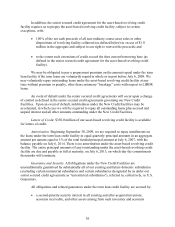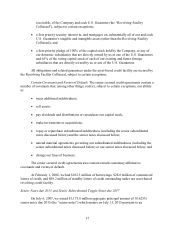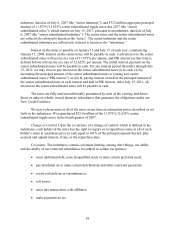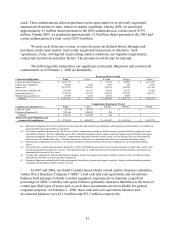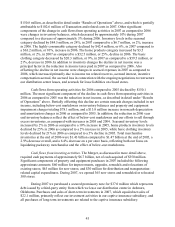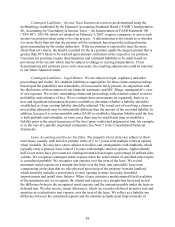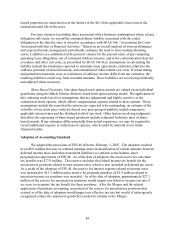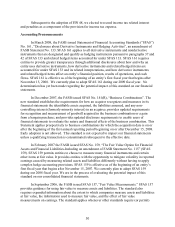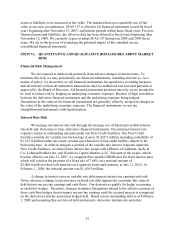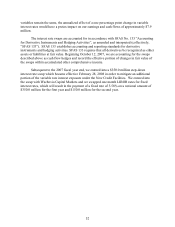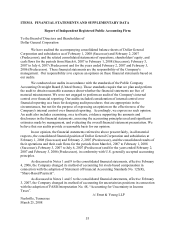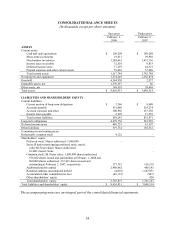Dollar General 2007 Annual Report Download - page 48
Download and view the complete annual report
Please find page 48 of the 2007 Dollar General annual report below. You can navigate through the pages in the report by either clicking on the pages listed below, or by using the keyword search tool below to find specific information within the annual report.46
• applying the RIM to a group of products that is not fairly uniform in terms of its cost
and selling price relationship and turnover;
• applying the RIM to transactions over a period of time that include different rates of
gross profit, such as those relating to seasonal merchandise;
• inaccurate estimates of inventory shrinkage between the date of the last physical
inventory at a store and the financial statement date; and
• inaccurate estimates of LCM and/or LIFO reserves.
Factors that reduce potential distortion include the use of historical experience in
estimating the shrink provision (see discussion below) and recent improvements in the LIFO
analysis whereby all SKUs are considered in the index formulation. As part of this process we
also perform an inventory-aging analysis for determining obsolete inventory. Our policy is to
write down inventory to an LCM value based on various management assumptions including
estimated markdowns and sales required to liquidate such aged inventory in future periods.
Inventory is reviewed on a quarterly basis and adjusted as appropriate to reflect write-downs
determined to be necessary.
Factors such as slower inventory turnover due to changes in competitors’ tactics,
consumer preferences, consumer spending and unseasonable weather patterns, among other
factors, could cause excess inventory requiring greater than estimated markdowns to entice
consumer purchases, resulting in an unfavorable impact on our consolidated financial statements.
Sales shortfalls due to the above factors could cause reduced purchases from vendors and
associated vendor allowances that would also result in an unfavorable impact on our
consolidated financial statements.
We calculate our shrink provision based on actual physical inventory results during the
fiscal period and an accrual for estimated shrink occurring subsequent to a physical inventory
through the end of the fiscal reporting period. This accrual is calculated as a percentage of sales
at each retail store, at a department level, and is determined by dividing the book-to-physical
inventory adjustments recorded during the previous twelve months by the related sales for the
same period for each store. To the extent that subsequent physical inventories yield different
results than this estimated accrual, our effective shrink rate for a given reporting period will
include the impact of adjusting the estimated results to the actual results. Although we perform
physical inventories in virtually all of our stores on an annual basis, the same stores do not
necessarily get counted in the same reporting periods from year to year, which could impact
comparability in a given reporting period.
Goodwill and Indefinite-Lived Intangible Assets. Under SFAS 142, “Goodwill and Other
Intangible Assets”, we are required to test goodwill and intangible assets with indefinite lives for
impairment annually, or more frequently if impairment indicators occur. Significant judgments
required in this testing process may include projecting future cash flows, determining appropriate
discount rates and other assumptions. Projections are based on management’ s best estimate given
recent financial performance, market trends, strategic plans and other available information.


